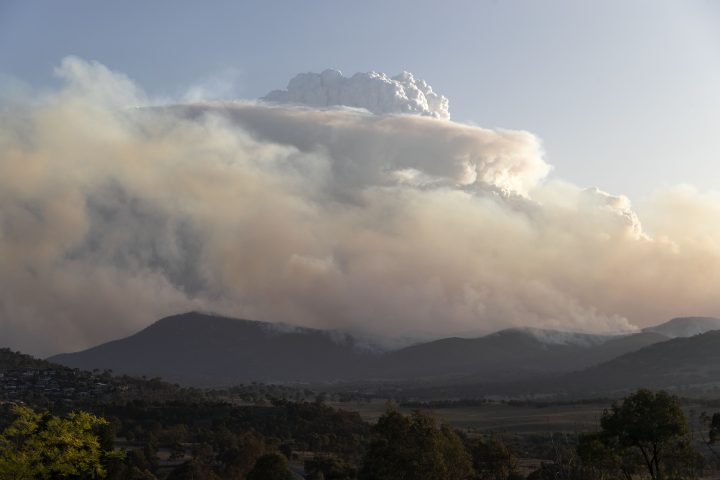As Canadians look ahead and book their summer trips this year, scorching temperatures amid potential heat waves could dampen travel plans.

The country experienced record-breaking temperatures in 2021. And raging wildfires in British Columbia and other parts of western Canada forced a number of flight cancellations.
Heat-related travel disruptions are nothing new, but climate change being blamed for more intense heat waves, the travel industry is in for a turbulent path ahead, experts say.
“Airports, airlines, and also passengers have to just understand that we need to plan for these sorts of events because they’re becoming more common and they can impact timely travel,” said Kent Moore, professor of physics at the University of Toronto, Mississauga.
According to the latest report by the Intergovernmental Panel on Climate Change (IPCC) released on Monday, without immediate and deep emissions reductions across all sectors, limiting global warming to 1.5°C (34.7F) is “beyond reach.”

The airline industry will also feel the effects of the soaring temperatures as the planet warms up. Intense heat makes it difficult for planes to take off or land because the warm air gives less lift to the aircraft, Moore explained.
A record-breaking heat wave in southwestern United States last year forced some flights at Las Vegas’ airport to be cancelled. Meanwhile, back in 2017, temperatures nearing 120 degrees in Phoenix resulted in dozens of flight cancellations.
“When it’s hot, planes can’t carry as much fuel or as much people just because they’re heavier and they don’t have as much lift,” he told Global News.
This means planes have to either reduce the amount of fuel they can carry, which affects how far they can travel, or they have to limit the number of passengers, Moore added.
Airlines told Global News they have several provisions and mechanisms in place in the event of heat waves and other extreme weather events.
Aircraft manufacturers are already working to make planes lighter and more fuel-efficient, which is helpful during heat waves.

Get breaking National news
In 2015, Boeing created what it claimed to be the “lightest metal ever” – made up of 99.99 per cent air.
“Strength and record-breaking lightness make it a potential metal for future airplanes and vehicles,” the U.S. aerospace company says.

The other issue is that hot conditions reduce the efficiency of ground operations, with staff suffering heat strokes and stress. Airports also have lots of asphalt which can really heat up, and that can be a “big problem,” said Moore.
When it comes to wildfires, visibility can be a challenge particularly for smaller, private planes because the smoke makes it difficult to see the runway.
A special class of thunderstorms, called pyrocumulonimbus clouds, which are quite dangerous to the aircraft, are also triggered by wildfires and then planes have to divert and fly around them. The intense heat of the wildfires causes the warm air to rise which can trigger the formation of a cloud that releases heat, Moore explained.
“The release of heat warms the air even more and this can trigger the thunderstorm,” he said.
Planning ahead
Airlines and airports in Canada say they are preparing ahead for another heat wave this summer.
In a statement to Global News, Air Canada said it has a “robust contingency planning process and mechanisms in place that allow us to respond quickly and effectively to any situation, with the safety of customers and employees always the foremost consideration.”
Canada’s second-largest carrier WestJet said it experienced several cancellations last summer due to the B.C. wildfires impacting operations across local regions.
“While rare, we do have several provisions in place to support our operations in instances of extreme weather, including heat waves to ensure the safety of our guests and employees,” said Denise Kenny, a spokesperson at the Calgary-based airline, in a statement to Global News.
In Kelowna, where wildfires forced mass evacuations of residents, airport operations at YLW were affected throughout the month of August due to airspace restrictions near active fires, as well as visibility issues from smoke.

However, there were no direct impacts to airport operations from the heat wave, said Phillip Elchitz, senior manager of airport operations at the Kelowna International Airport.
“In preparation for the 2022 season, YLW continues to work with BC Wildfire Service, NavCanada and Transport Canada to mitigate potential issues and incorporate learning from previous years,” he told Global News in an email.
“There is always the potential of weather-related disruptions to air service.”
To ensure the safety of staff at Vancouver International Airport, a YVR spokesperson said team members limit the time they spend exposed to extreme heat and have access to electrolyte beverages throughout their shifts.
“As extreme weather in our region becomes a more frequent occurrence, we continue to look at the potential effects of climate change on our operations in an integrated manner,” the spokesperson told Global News.

Meanwhile, the Calgary Airport Authority (YYC) is also looking at ways to tackle extreme weather events.
“We conducted a climate change risk assessment that identified both wildfires and heat waves, as well as other climate change factors, as impactful to our operations,” said Carmelle Hunka, vice-president of People, Risk, and General Counsel at The Calgary Airport Authority.
Because heat waves are relatively easy to forecast, that helps with short-term planning by scheduling more people to work or reducing operations, said Moore.
“I think the bigger problem, of course, is that as we continue to warm the planet, heat waves are going to become more common,” he said. And that will require better planning.
“If airline operators and airports aren’t planning, they should begin to plan,” said Moore.
- Canadian woman charged with illegally crossing into U.S., kicking border agent’s face
- A new ‘cold’ war? Canada looks to bolster Arctic security, sovereignty
- Canadian furniture industry still ‘reeling’ after Trump pauses tariff spike
- Ottawa propose fines of up to $1M for violating foreign influence registry rules









Comments